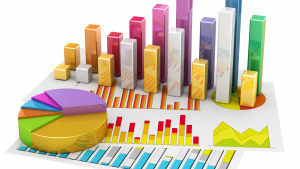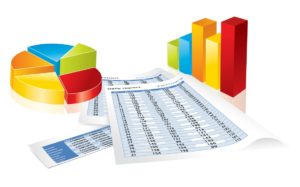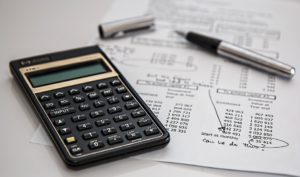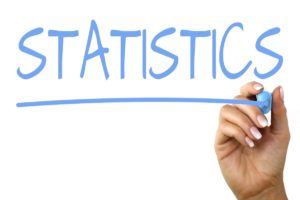
Top managers of the largest Wall Street banks in recent days gave more optimistic assessments of the prospects for the U.S. economy compared with previous forecasts, writes the Financial Times.
In particular, bankers now see a higher probability that the Federal Reserve will be able to provide a so-called “soft landing,” that is, to combat high inflation, while managing to avoid recession.
“The consensus among corporate executives has shifted slightly in a more positive direction. The sagging economy is now expected to be milder than many expected six months ago,” Goldman Sachs Group chief David Solomon said Tuesday at an event hosted by Credit Suisse.
A positive tone also prevailed in a speech by Bank of America Corp. Brian Moynihan, who noted the high consumer activity and resilient profitability of mid-cap companies.
“Consumers have money. They have jobs, they’re spending money and taking out loans,” Moynihan said at a conference on financial services.
Wells Fargo Chief Financial Officer Michael Santomassimo also pointed to “very good consumer spending data.”
Such comments contrasted with statements by bank executives last year when they expressed serious concerns about the state of the U.S. economy, notes the FT.
Despite the growth of optimism, grounds for concern remain. In particular, the head of Goldman Sachs said that the future trajectory of inflation is still unclear, high rates of growth in consumer prices can be observed for quite some time, which will affect the economy as a whole.
“I think we’re going to see weaker, slower growth for a while,” Solomon said.
Earlier, the Club of Experts consolidated and analyzed economic indicators of Ukraine and the world, more details in the video at the link

The share of shadow operations in Ukraine in 2018 amounted to 23.8% of GDP, or UAH 846 billion, according to preliminary results of an Ernst & Young study supported by Mastercard, published by the National Bank of Ukraine (NBU).
The receipts of the general fund of Ukraine’s national budget totaled UAH 42.6 billion in January 2020, which is UAH 13.8 billion less than the monthly target, thus it was met by 76%, the Finance Ministry has reported, referring to tentative data from the State Treasury Service of Ukraine.
Morgan Stanley has improved the forecast for the growth of the Ukrainian economy in 2020 to 3.6% of GDP from 3.2% of GDP in the October forecast, according to the bank’s report available to Interfax-Ukraine.
The potential reintegration of Donbas might add up to 1.5 percentage points (pp) to Ukraine’s GDP growth during two or three years, Bank of America (BofA) has said in its analytical review.
The growth of gross domestic product (GDP) of Ukraine in October-December 2019 amounted to 1.5% compared to the same period in 2018, while in the previous quarters the growth rate was higher: 4.1% in the third, 4.6% in the second and 2.5% in the first.
Growth of Ukraine’s GDP in 2019 slowed from 3.4% in 2018 to 3.3%, while the drivers of this growth have changed, the Ministry of Economic Development, Trade and Agriculture of Ukraine said.
Capital investments in Ukraine in 2019 increased by 15.5%, while in 2018 their growth was 16.4%, and a year earlier some 22.1%, the State Statistics Service has said.
The surplus of Ukraine’s foreign trade in services in 2019 increased by 63.5% compared to 2018, to $8.71 billion, the State Statistics Service has said.
Inflation in Ukraine in January 2020 amounted to 0.2% compared to 1% in January 2019, which led to its annual decline to 3.2% from 4.1%, the State Statistics Service has reported.
The National Bank of Ukraine (NBU) is creating a contact group of the monetary and foreign exchange markets for exchange of information and opinions among their participants regarding the real state of these markets and their development.
The total state debt of Ukraine in January 2020, due to the weakening of the hryvnia exchange rate by 5.2%, in U.S. dollar terms decreased by 1.1%, or by $940 million, to $83.43 billion, the Finance Ministry has said.
Industrial production in Ukraine in January 2020 decreased by 5.1% compared to January 2019, while in January last year a decrease of 3.3% was recorded compared to the same month of the previous year, the State Statistics Service has said.
Ukraine since the beginning of the marketing year 2019/2020 (MY, July-June) and as of February 24, 2020 had exported 39.48 million tonnes of grain and legumes, which is 7.65 million tonnes more than on the same date of last MY.
Transport enterprises of Ukraine reduced cargo transportation by 12.3% in January 2020 compared to January 2019, to 44 million tonnes, the State Statistics Service has reported.
The volume of construction work in Ukraine in January-2020 increased by 3.6% compared with January 2019 and amounted to UAH 7.4 billion, in December 2019 compared to December a year earlier by 6.8%.
Ukraine has increased exports of IT services in 2019 by 30.2%, to $4.17 billion, according to a posting on the website of the IT Ukraine association, referring to data of Ukraine’s balance of payment.
Ukraine’s retail trade turnover in January 2020 in comparable prices increased by 12.1% compared with January 2019, the State Statistics Service has reported.

Goldman Sachs predicts the increase in inflation in Ukraine by 4.1% in 2019 and to 5% in 2020, according to the materials of the bank.
The inflation slowing in Ukraine in 2019 has turned out to be more significant than it was projected in the forecasts of the National Bank of Ukraine (NBU) published in inflation reports within 2019 (6.3% as of late 2019) and assessments of other expert organizations, the regulator has said in comments on inflation on its website.
The macroeconomic situation allows the Ukrainian economy to grow rapidly in the coming several years, Ukrainian Prime Minister Oleksiy Honcharuk has said.
Ukrainian businesses forecast inflation in 12 months at 7%, which is 0.1 percentage point (p.p.) worse than expected a quarter earlier.
The National Bank of Ukraine (NBU) has retained its forecast for real GDP growth in Ukraine for 2020-2021 at 3.5% and 4% respectively, expecting that GDP would grow by 4% in 2020.
According to the data of the electronic census, population of Ukraine totals 37.289 million, minister of the Cabinet of Ministers Dmytro Dubilet reported.
Real wages in Ukraine in December 2019 increased by 11.3% compared with December 2018, while compared with November 2019 they increased by 15.1%, the State Statistics Service has said.
According to the data of the electronic census, population of Ukraine totals 37.289 million, minister of the Cabinet of Ministers Dmytro Dubilet reported. “Ukraine amounts 37.289 million people,” Dubilet said at a press conference in Kyiv.
The deficit of Ukraine’s foreign trade in goods in January-November 2019 increased by 5.7% compared to the same period in 2018 (also $8.869 billion in deficit), to $9.374 billion, the State Statistics Service reported.
Exports of goods from Ukraine during the reporting period increased 6.3%, to $45.963 billion, while imports grew by 6.2%, to $55.337 billion, it said.
The deficit of Ukraine’s state budget for 2019 was UAH 78.05 billion with the ceiling set in the national budget being UAH 91.13 billion, while in 2018 the deficit of the national budget was UAH 59.25 billion with the ceiling of UAH 94.1 billion.
Industrial production in Ukraine in 2019 decreased by 1.8% compared to 2018, while in December 2019 from December 2018 the decline was 7.7%, the State Statistics Service has reported.
The volume of industrial products (goods, services) sold in Ukraine in January-November 2019 amounted to UAH 2.273 trillion, which is 0.5% more than in January-November 2018 (UAH 2.261 trillion), in particular outside the country to UAH 602.8 billion, the State Statistics Service has said.
The deficit of Ukraine’s state budget for 2019 was UAH 78.05 billion with the ceiling set in the national budget being UAH 91.13 billion, while in 2018 the deficit of the national budget was UAH 59.25 billion with the ceiling of UAH 94.1 billion.

The growth of Ukraine’s gross domestic product (GDP) in April-June 2019 amounted to 4.6% compared to the same period in 2018, while in the first quarter the growth rate was lower and stood at 2.5%, according to preliminary data from the State Statistics Service, which confirmed its operational assessment dated mid-August this year. Fitch has said that after a strong Q2 2019 (4.6% year-over-year), Fitch projects 3.4% growth in 2019, reflecting strong domestic demand and exports driven by the agriculture sector (wheat harvest).
The deficit of Ukraine’s foreign trade in goods in January-July 2019 increased by 18.5% compared with January-July 2018, to $4.936 billion, the State Statistics Service has reported.
Actual inflation in August 2019 in Ukraine has approached the forecast of the National Bank of Ukraine (NBU) published in the inflation reform for July 2019, the regulator has reported on its website.
Consumer prices in Ukraine after falling in July 2019 by 0.6% in August fell by another 0.3%, and in annual terms inflation in August fell to 9% from 9.1% in July, the State Statistics Service of Ukraine has said.
The national budget of Ukraine in January-August 2019 posted a surplus of UAH 2.38 billion with the deficit of the general fund being UAH 4.12 billion, according to data on the website of the State Treasury Service.
Revenue of the national budget in August 2019 totaled UAH 87.6 billion, which is 6.9% less than in August 2019, and the outturn is 91%, according to data from the State Treasury Service of Ukraine.
Solvent Ukrainian banks in January-August 2019 received UAH 44.29 billion in net profit, which is 3.2 times more than in the same period in 2018, the National Bank of Ukraine (NBU) has said.
The consolidated profit of the National Bank of Ukraine (NBU) through January-June 2019 totaled UAH 6.4 billion, while its loss for the similar period of 2018 totaled UAH 1.1 billion, according to the first such kind of interim report posted by the central bank.
Ukraine’s international reserves in August 2019, according to preliminary data, rose by 0.8%, to $22.015 billion.
Industrial products (goods, services) worth UAH 1.485 trillion were sold in Ukraine in January-July 2019, which is 5.2% more than in January-July 2018 (UAH 1.411 trillion), in particular abroad for UAH 406.371 billion, the State Statistics Service has said.
Industrial prices in Ukraine in August 2019 decreased 0.7% after rising in July by 3.6% and falling by 2.7% in June, the State Statistics Service has said.
Sugar production in Ukraine as of September 24, 2019 amounted to 121,500 tonnes.
The transport enterprises of Ukraine in January-August 2019 increased freight transportation by 8.1% compared to the same period of 2018, to 442.9 million tonnes, the country’s State Statistics Service has said. The transport companies of Ukraine in January-August 2019 carried 2.808 billion people, which was 5.9% down year-over-year (y-o-y), the country’s State Statistics Service has reported.
The volume of construction work in Ukraine in August 2019 increased by 8.9% compared to August 2018, while in July 2019 from July 2018 this figure rose by 14.5%.
Retail trade in Ukraine in January-August 2019 increased by 9.9% in comparable prices compared with January-August 2018.

The Institute of International Finance (IIF) predicts a slowdown in real gross domestic product (GDP) growth in Ukraine from 3.3% in 2018 to 2.8% in 2019 and its subsequent slight acceleration to 2.9% in 2020.
The National Bank of Ukraine has improved its macro forecast for 2019–2021: the estimate of the real growth of the economy this year has been raised from 2.5% to 3%, and in the next year from 2.9% to 3.2%.
The deficit of Ukraine’s foreign trade in goods in January-May 2019 increased by 27.4% compared with January-May 2018, to $2.634 billion, the State Statistics Service has reported.
The Cabinet of Ministers of Ukraine on July 10 approved the strategy for the development of exports of agricultural, food and processing industry products until 2026, as well as a plan for its implementation, the press service of the Ministry of Agrarian Policy and Food has said.
Ukraine’s Investment Attractiveness Index in January-June 2019 fell to the level of 2016, being 2.85 points on a 5-grade scale compared with 3.07 in H2 2018, according to findings of the European Business Association (EBA).
The actual inflation rate in Ukraine in June 2019 was higher than the forecast published in the Inflation Report (April 2019), according to the NBU’s commentary on the inflation rate posted on the central bank’s website.
Consumer prices in Ukraine in June 2019 fell by 0.5% compared with May 2019, while in annual terms inflation of 9% was seen, the State Statistics Service of Ukraine reported.
The surplus of Ukraine’s national budget in H1 2019 totaled UAH 2.1 billion, including the deficit of the general fund of the national budget being UAH 6.8 billion, while in January-May 2019 the surplus of the national budget was UAH 7.7 billion with the deficit of the general fund of UAH 2.14 billion, Ukraine’s Finance Ministry has reported on its website, referring to preliminary data from the State Treasury Service of Ukraine.
The deficit of the national budget of Ukraine in January-June 2019 amounted to UAH 871 million, in particular the general fund deficit was UAH 8.67 billion with the target being UAH 22.99 billion, the State Treasury Service has said.
The assets of the National Bank of Ukraine (NBU) in January-June 2019 decreased by 5.3% and amounted to UAH 993.707 billion, the corresponding financial indicators were published by the central bank in the Uriadovy Kurier edition.
The consolidated balance of payments of Ukraine in May 2019 saw a deficit of $750 million against a deficit of $45 million in April, a surplus of $652 million in March 2019 and $266 million in May 2018, which is associated with large payments on public debt and an increase in cash outside banks.
Industrial production in Ukraine in June 2019 decreased by 2.3% compared with June 2018, after growing in May by 1.6%, April by 5.2%, in March by 2.1% , Ukraine’s State Statistics Service reported.
The transport enterprises of Ukraine (excluding the territory of the Autonomous Republic of Crimea and Sevastopol, as well as part of the JFO area) in January-June 2019 increased freight transportation by 8.2% compared to the same period of 2018, to 328.5 million tonnes, the State Statistics Service has reported.
The transport companies of Ukraine in January-June 2019 carried 2.137 billion people, which is 6.3% less than in the same period of 2018, the State Statistics Service has reported.
The volume of construction work performed in Ukraine in June 2019 increased by 1.7% compared with June 2018, while the indicator in May 2019 vs May 2018 rose by 15.7%.
In January-June 2019, retail trade in Ukraine increased by 10.3% in comparable prices year-over-year, the State Statistics Service reported.

IMF expects the completion of parliamentary elections in Ukraine to continue negotiations on further cooperation with the country, IMF Spokesperson Gerry Rice has said at a briefing in Washington.
The growth of Ukraine’s gross domestic product in January-March 2019 was 2.5% compared to the same period in 2018, the State Statistics Service has reported, while according to its preliminary estimate made in mid-May this figure was 2.2%.
Ukraine could receive the second tranche of EU macro-financial assistance in the amount of EUR 500 million by the end of 2019, Head of the EU Delegation to Ukraine Hugues Mingarelli has said.
Ukrainian President Volodymyr Zelensky has said that he does not offer large businessmen Victor Pinchuk, Rinat Akhmetov, Ihor Kolomoisky and other representatives of business any preferences, but offers only honest common rules for everyone.
Ukrainian President Volodymyr Zelensky has said about his vision of how to make Ukraine the really rich country and called on business to invest money, time and ideas in Ukraine.
Ukrainian President Volodymyr Zelensky has invited foreign business to participate in the investment council under the Presidential Administration of Ukraine, which will meet twice a year.
The deficit of Ukraine’s foreign trade in goods in January-April 2019 grew by 45.2% compared with January-April 2018, to $2.093 billion, the State Statistics Service said.
Inflation in Ukraine in May 2019 was 0.7% compared to 1% in April, 0.9% in March, 0.5% in February and 1% in January, the State Statistics Service of Ukraine has reported.
The surplus of the Ukrainian national budget in January-May 2019 was UAH 8.6 billion, with the target being UAH 90 billion over the year, according to the Ministry of Finance’s website.
Revenue of Ukraine’s national budget in May 2019 totaled UAH 104.119 billion, which is 8.5% more than it was expected that 7.5% more compared with May 2018, according to information posted on the website of the State Treasury Service of Ukraine.
Money supply in Ukraine in May 2019 decreased by 0.3%, to UAH 1.260 trillion, the corresponding preliminary data are posted on the website of the National Bank of Ukraine (NBU).
The international reserves of Ukraine in May 2019, according to preliminary data, decreased by 5.5%, to $19.402 billion due to significant repayments of government debt, according to the NBU’s website.
The aggregate state (direct) and state-guaranteed debt of Ukraine in May 2019 fell by 1.8% or $1.4 billion, to $78.39 billion.
Ukraine’s gross external debt as of April 1, 2019 was $114.43 billion, which is $0.28 billion, or 0.24%, less than at the beginning of the year, the National Bank of Ukraine (NBU) said.
The deficit of Ukraine’s consolidated balance of payment in April 2019 totaled $45 million, while the surplus in March was $652 million.
Industrial production in Ukraine in May 2019 increased by 1.6% compared with May 2018, after a rise of 5.2% in April, 2.1% in March, and a fall of 1.8% and 3.3% in February and January respectively, the State Statistics Service has reported.
Industrial prices in Ukraine in May 2019 increased by 2.1%, after falling by 1.5% in April and by 1% in March, growing by 1% in February and January, the State Statistics Service said.
The volume of construction work performed in Ukraine in May 2019 increased by 15.7% compared with May 2018, while the indicator in April 2019 compared with April 2018 rose by 29.4%.
Retail trade turnover in Ukraine in January-May 2019 in comparable prices increased by 9.6% compared with January-May 2018, the State Statistics Service has reported.
The Consumer Confidence Index (CCI) equals 82.8 in May, which is 11.2 points higher than the indicator in April, the values of indices can vary from 0 to 200, according to a study by Info Sapiens.